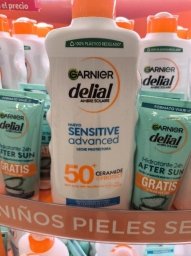 "Medium penalty" in all categories.
"Medium penalty" in all categories.
- Origin(s): Synthetic
- Other languages: Trietanolamin, Trietanolamina, Trietanolamină, Trietanolammina, Trietanoloamina, Triethanolamin, Triethanolamín, Triéthanolamine, Triëthanolamine, trietanolamin, Триетаноламин, טריאתנולמין, ثلاثي إيثانولامين, トリエタノールアミン, 트리에탄올아민
- INCI name: TRIETHANOLAMINE
- EINECS/ELINCS number: 203-049-8
- Classification: Regulated, TEA
Namely
Triethanolamine or more commonly called TEA is a basic tertiary amine. It is often used as a pH adjuster or to thicken cosmetic formulas. Its manufacture results from the reaction of ethylene oxide (very toxic) with ammonia (also toxic).
In the presence of nitrite, TEA forms nitrosamines known to be carcinogenic. Nevertheless, it must be imagined that the risk remains very low in a bathroom. However, beyond this aspect, many studies (including CIR) seem to indicate that TEA is toxic to the skin, the immune system and the respiratory tract in humans. One or more animal studies have shown effects on the sense organs at very low doses, particularly when used around the mouth, eyes and lips, and one or more in vitro tests on mammalian cells have shown positive mutation results.
In the presence of nitrite, TEA forms nitrosamines known to be carcinogenic. Nevertheless, it must be imagined that the risk remains very low in a bathroom. However, beyond this aspect, many studies (including CIR) seem to indicate that TEA is toxic to the skin, the immune system and the respiratory tract in humans. One or more animal studies have shown effects on the sense organs at very low doses, particularly when used around the mouth, eyes and lips, and one or more in vitro tests on mammalian cells have shown positive mutation results.
Biodegradable :
Degrades easily in soil and freshwater, but not easily in marine systems.
Restriction in Europe:
III/62
The maximum permitted concentration of TEA is 2.5% in leave-on products.
The following restrictions also apply:
- Do not use with water-soluble systems
- Minimum purity >=99%.
- Maximum secondary amine content: 0.5% for raw materials
- Maximum nitrosamine content: 50 μg/kg
- Store in a nitrite-free container
The maximum permitted concentration of TEA is 2.5% in leave-on products.
The following restrictions also apply:
- Do not use with water-soluble systems
- Minimum purity >=99%.
- Maximum secondary amine content: 0.5% for raw materials
- Maximum nitrosamine content: 50 μg/kg
- Store in a nitrite-free container
Its functions (INCI)
- pH regulator : Stabilises the pH of cosmetics
- Emulsifying : Promotes the formation of intimate mixtures between immiscible liquids by modifying the interfacial tension (water and oil)
- Masking : Reduces or inhibits the odor or basic taste of the product
- Surfactant : Reduces the surface tension of cosmetics and contributes to the even distribution of the product when it is used
This ingredient is present in 5.38% of cosmetics.
Products that contains it












